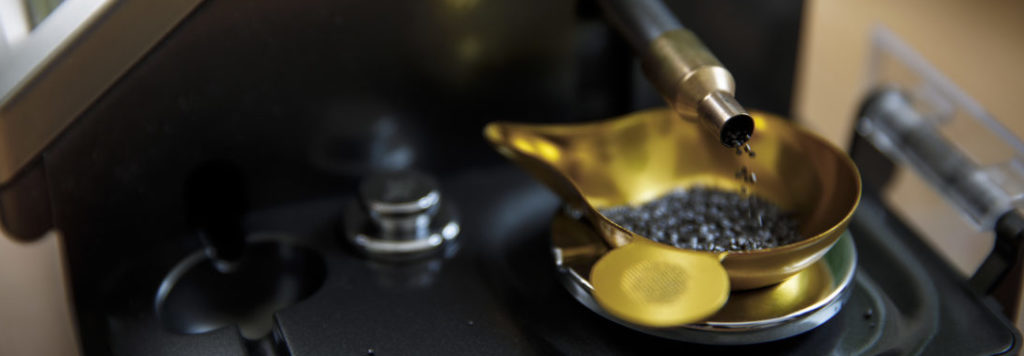
Try our versatile range of reloading powders
Vihtavuori premium smokeless powders come in three different series:
Vihtavuori N100 offers traditional single base propellants for rifle calibers
Vihtavuori N300 offers porous single base gun powders and precise measuring for pistol cartridges, rimfire ammunition and shotgun shells,
Vihtavuori N500 series powders are special high energy rifle propellants enhanced with nitroglycerin for extra ballistic performance.
All our reloading powders are STANAG 4170 qualified and REACH compliant. The estimated shelf-life of Vihtavuori gun powders is a minimum of 10 years, if stored and sealed in its original containers at a temperature of circa 20°C/ 68°F and a relative humidity of 55-65 %. Wondering how to store gun powders safely? Read more about storing powders here!
What are smokeless powders?
Smokeless powders, or propellants, are essentially mixtures of chemicals designed to burn under controlled conditions at the proper rate to fire a projectile from a firearm. Smokeless powders are made in three forms:
- Thin, circular flakes or wafers
- Small cylinders
- Small spheres
Single-base smokeless powders derive their main source of energy from nitrocellulose. The energy released from double-base smokeless powders (such as the Vihtavuori N500 rifle powders) is derived from both nitrocellulose and nitroglycerine.
What happens when a smokeless powder burns?
All smokeless powders are extremely flammable by design, they are intended to burn rapidly and vigorously when ignited. Oxygen from the air is not necessary for the combustion of smokeless powders, since they contain sufficient built-in oxygen to burn completely, even in an enclosed space such as the chamber of a firearm.
In effect, ignition occurs when the powder granules are heated above their ignition temperature. This can occur by exposing powder to:
- A flame such as a match or primer flash.
- An electrical spark or the sparks from welding, grinding, etc.
- Heat from an electric hot plate or a fire directed or near a closed container even if the powder itself is not exposed to the flame.
When smokeless powder burns, a great deal of gas at high temperature is formed. If the powder is confined, this gas will create pressure in the surrounding structure. The rate of gas generation is such, however, that the pressure can be kept at a low level if sufficient space is available or if the gas can escape. In this respect smokeless powder differs from blasting agents or high explosives such as dynamite or blasting gelatin, although smokeless powder may contain chemical ingredients common to some of these products. High explosives such as dynamite are made to detonate, that is, to change from solid state to gaseous state with evolution of intense heat at such a rapid rate that shock waves are propagated through any medium in contact with them. Such shock waves exert pressure on anything they contact, and, as a matter of practical consideration, it is almost impossible to satisfactorily vent away the effects of a detonation involving any appreciable quantity of dynamite.
Smokeless powder differs considerably in its burning characteristics from common “black powder”. Black powder burns essentially at the same rate out in the open (unconfined) as when in a gun. When ignited in an unconfined state, smokeless powder burns inefficiently with an orange-colored flame. It produces a considerable amount of light brown noxious smelling smoke. It leaves a residue of ash and partially burned powder. The flame is hot enough to cause severe burns. The opposite is true when it burns under pressure as in a cartridge fired in a weapon. Then it produces very little smoke, a small glow, and leaves very little or no residue. The burning rate of smokeless powder increases with increased pressure.
If burning smokeless powder is confined, gas pressure will rise and eventually can cause the container to burst. Under such circumstances, the bursting of a strong container creates effects similar to an explosion. For this reason, the Department of Transportation (formerly Interstate Commerce Commission) sets specifications for shipping containers for propellants and requires tests for loaded containers – under actual fire conditions – before approving them for use. When smokeless powder in D.O.T. approved containers is ignited during such tests, container seams split open or lids pop off – to release gases and powder from confinement at low pressure.
Consumer Package information
| Consumer package, bottle 0,6 ltr (36.6 in3) Measures: sides & height 95 x 75 x 140 mm |
net weight | gross weight |
| N110, N120, N130, N133, N135, N140, N150, N160, N165, N170, 24N41, 20N29 | 1.0 lbs | 1.1 lbs |
| N530, N540, N550, N555, N560, N565, N568, N570 | 1.0 lbs | 1.1 lbs |
| Consumer package, bottle 1,2 ltr (73.2 in3) Measures: sides & height 95 x 75 x 226 mm |
net weight | gross weight |
| N110, N120, N130, N133, N135, N140, N150, N160, N165, N170, 24N41, 20N29 | 1.0 kg | 1.1 kg |
| N530, N540, N550, N555, N560, N565, N568, N570 | 1.0 kg | 1.1 kg |
| N310, N320, N32C, N330, N340, N350, 3N37, 3N38, N105 | 0,5 kg | 0,6 kg |
| N310, N320, N32C, N330, N340, N350, 3N37, 3N38, N105 | 1.0 lbs | 1.2 lbs |
| Consumer package, bottle 4,5 ltr (274.6 in3) Measures: sides & height 135 x 189 x 260 mm |
net weight | gross weight |
| N110, N140, N150, N160 | 3,5 kg | 3,7 kg |
| N310, N320, N340, 3N37, 3N38 | 2,0 kg | 2,2 kg |
| N110, N120, N130, N133, N135, N140, N150, N160, N165, N170, 24N41, 20N29, N530, N540, N550, N555, N560, N565, N568, N570 |
8.0 lbs | 8.4 lbs |
| N310, N320, N32C, N330, N340, N350, 3N37, 3N38 | 4.0 lbs | 4.4 lbs |
